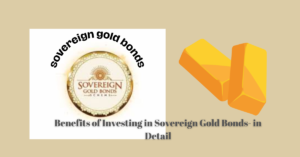Strategic Investment of Capital Growth
Strategic investment of capital growth refers to the deliberate and thoughtful allocation of funds into various assets or financial instruments with the primary objective of achieving significant growth in wealth over a predetermined period unlike speculative investments, which often involve high risk ventures with uncertain outcomes strategic investment focuses on a well thought out plan that consider factors such as risk tolerance, investment goals, and market conditions.
In essence, strategic investment involves carefully selecting investment opportunities that align with one’s financial objectives and risk appetite. This could include investing in stocks, bonds, real estate mutual funds, or other asset classes, depending on factors such as the investor’s time horizon, desire rate of return and tolerance for risk.

The strategic aspect of this type of investment lies in the planning and execution of a diversified portfolio designed to optimize returns while minimizing risks. This might involve asset allocation strategies that spread investments across different sectors or geographic regions to reduce the impact of market volatility.
Furthermore strategic investment for capital growth typically involves ongoing monitoring and adjustments to the investment portfolio based on changes in market conditions, economic trends, and personal financial goals, By taking a proactive approach to investment management, investors aim to capitalize on opportunity for growth while safeguarding against potential looses.
Overall strategic investment for capital growth is about taking a disciplined and informed approach to wealth accumulation, with the ultimate goal of maximizing returns and achieving long term financial success.
Strategic Investment of Capital Growth example
- An example of strategic investment for capital growth could involve a scenario where and investor has a long term goal of saving of retirement, aiming to build a substantial nest egg over the next 30years.
- To achieve this objective, the investor adopts a strategic approach by diversifying their investment portfolio across various asset classes. They allocate a portion of their funds into equities for potential high returns over the long term, understanding that stocks historically outperform other asset classes over extended periods.
- However, they also recognize the inherent volatile of the stock market and the need for risk management. Therefore ,they balance their equity holdings with fixed income securities like government bonds or high quality corporate bonds. These bonds provide stability to the portfolio and generate steady income through interest payments, thus mitigating some of the risks associated with stock market fluctuations.
- Additionally the investor allocates a portion of their portfolio to real estate investments, such as rental properties or real estates investment trusts. Real estate offers the potential for both capital appreciation and rental income, diversifying the portfolio further and providing an additional source of passive income.
- Moreover, the investor embraces the concept of strategic rebalancing, periodically reviewing and adjusting their portfolio to maintain the desired asset allocation. For instance, if the equity portion of the portfolio has outperformed other asset classes and now constitutes a higher percentage of the total portfolio, the investor may sell some stocks and reallocate the proceeds into bonds or other assets to maintain the desired balance.
- Through this strategic investment journey, the investor remains focused on their long term goals, regularly contributing to their investment accounts and reinvesting dividends or rental income to harness the power of compounding. By adhering to a well thought out investment plan and staying disciplined in the face of market fluctuations, the investors aim to achieve significant capital growth over time, ultimately realizing their retirement objectives
Capital growth formula
The capital growth formula calculate the increase in the value of an investment over a specified period. It’s commonly used by investors to assess the performance of their investments and to estimate the potential returns they might expect in the future.
The formula for calculating capital growth is :
- Capital Growth= Final value − initial value )×100%
————————————-
Initial value
Where:
- Capital Growth: The percentage increase in the value of the investment.
- Final Value: The current value of the investment at the end of the specified period.
- Initial Value: The initial value of the investment at the beginning of the specified period.
- To use this formula, subtract the initial value of the investment form its final value, then divide the result by the initial value. Multiply the quotient by 100 to express the capital growth as a percentage.
- For example if you Invested $10,000 in a stock and its value increased to 12,000 after one year, the calculation would be.
- Capital Growth = (10,00012,000−10,000)×100%=(10,0002,000)×100%=20%
- This indicates that the investment experienced a capital growth of 20% over the one year period.
Best strategic investment for capital growth
Determining the best strategic investment for capital growth depends on various factors, including your investment goals, risk tolerance, time horizon, and financial situation. However, some investment options are commonly considered favorable for long term capital growth.
- Stock Market Investments: Investing in individual stocks or equity funds can offer significant potential for capital growth over the long term. Historically, the stock market has provided higher returns compared to other asset classes, albeit with higher volatility.
- Diversified mutual Funds or Exchange Traded Funds: Mutual funds and ETFs pool money from multiple investors t invest in a diversified portfolio of stocks bonds or other assets. They offer exposure to a wide range of securities reducing the risk associated with investing in individual stocks while still providing opportunities for capital growth.
- Real Estate: Real estate investments, such as rental properties or real estate investment trusts can generate capital growth through property appreciation and rental income. Real estate often serves as a hedge against inflation and can provide a steady stream of cash flow, making it an attractive option for long term investors.

- Investment in Emerging Markets: Emerging markets, such as those in Asia, Latin America, or Africa, offer significant growth potential due to factors like demographic trends, urbanization, and economic development. Investing in emerging market stocks for funds can provide exposure to high growth industries and economies, albeit with higher volatility and risk.
- Technology and Innovation: Investments in technology companies and innovative industries, such as artificial intelligence, biotechnology, or renewable energy, can offer substantial capital growth opportunities. These sectors often experience rapid growth and disruption, presenting opportunities for investors to capitalize on emerging trends and technologies.
- Long Term Bonds and Fixed Income Securities: While typically offering lower returns compare to stocks long term bonds and fixed income securities can still contribute to capital growth while providing stability to a portfolio. Bond issued by stable governments or high quality corporations can generate steady income through interest payments and appreciate in value over time.
- Small Cap and Mid Cap Stocks: Investing in smaller companies or mid sized enterprises can offer greater growth potential compared to larger, more established companies. Small cap and mid cap stocks may be less researched by analysts and therefore undervalued, providing opportunities for investors to benefit from their growth trajectory.
What is capital growth in shares
Capital growth in shares refers to the increase in the value of an investment in stocks over time. It represents the appreciation in the market value of the shares held by an investor, resulting in a higher over all worth of their investment portfolio.
When the price of a share rises from its initial purchase price, the difference between the initial purchase price and the current market price represents capital growth. This growth can occur due to various factors, including company performance, industry trends, economic conditions, and investor sentiment.

Capital Growth in shares can be realized through two primary mechanisms:
- Capital Appreciation: This occurs when the market value of the shares increases over time. If an investor buys shares at a certain price and the market price rises above that level, they can sell the shares at the higher price, realizing a capital gain.
- Dividend Reinvestment: Many companies distribute a portion of their profits to shareholders in the form of dividends. Investors can reinvest these dividends to purchase additional shares of the company’s stock. Over time, the compounded effect of reinvesting dividends can significantly contribute to capital growth. Capital growth in shares is a key metric used by investors to assess the performance of their stock investments. It reflects the success of the investor’s strategy in selecting stocks that appreciate in value over time. Additionally, capital growth is an essential component of total returns generated from stock investments, alongside dividends and other





